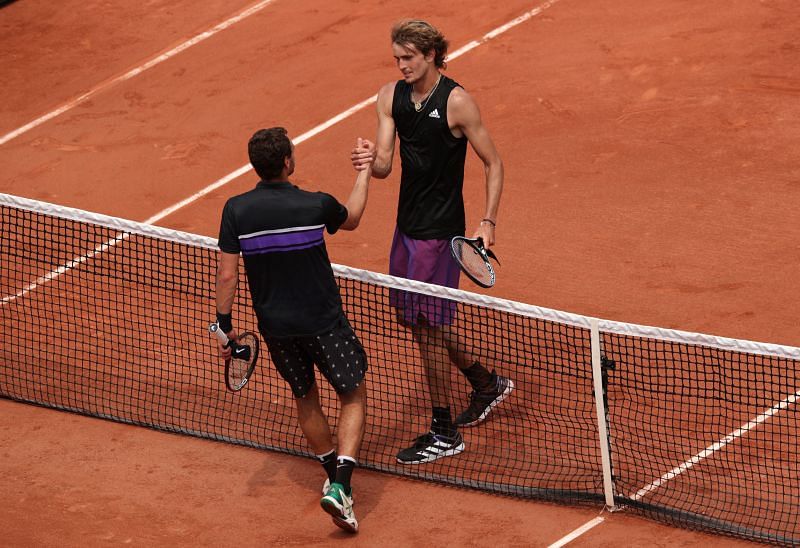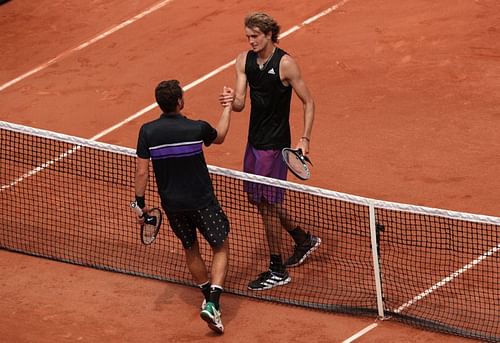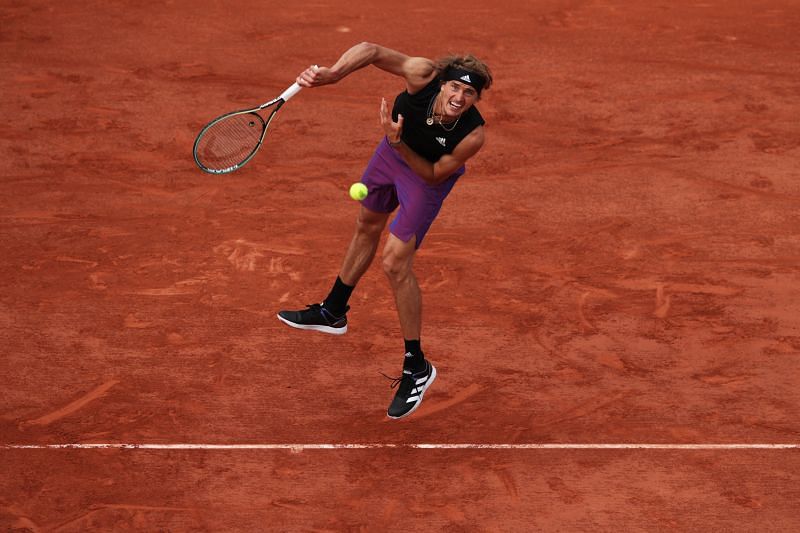
Roland Garros 2021: 3 things we learned from Alexander Zverev's win over Roman Safiullin

Alexander Zverev moved into the third round of the 2021 Roland Garros with a battling 7-6(4), 6-3, 7-6 (1) win over Roman Safiullin on Wednesday. The German will next face Serbia's Laslo Djere.
Zverev, a two-time quarterfinalist in Paris, was given a tough time by Safiullin throughout the match. The Russian qualifier led the German 3-1 in the second set and 4-1 in the third, but Zverev clawed his way back on both occasions with quality serving and shotmaking.
On that note, here's a look at three key takeaways from Zverev's straight-sets win:
#1 Alexander Zverev's first serve is a get-out-of-jail-free card
While Alexander Zverev has one of the best backhands on tour, his first serve remains by far his biggest weapon. The sixth seed won 53 of the 66 points played on his first delivery, which amounts to an 80% success rate. The lanky German also fired 15 aces.
Zverev's first serve allowed him to claw his way back into service games even when he trailed by a point or two. Naturally, Safiullin did not get much of a read on the German's serve and could muster up just four break points.
The sixth-seeded German will be pleased that his first serve is not just finding the right spots but also doing so consistently.
#2 Alexander Zverev's second serve can put him right back in jail

Alexander Zverev's first-serve numbers against Roman Safiullin made for good reading. They were also a significant improvement to those he posted against Oscar Otte in the first round (74% win rate with nine aces and four breaks).
But alarmingly for him, his second serve once again proved to be shaky against Safiullin as he coughed up 10 double faults.
Alexander Zverev won 59% of his second serve points against Otte but managed only 53% against Safiullin.
The only positive for the German is the fact that his second serve did not desert him during the two tiebreaks, where he committed just one double fault.
#3 Zverev's backhand is forged from steel
It is no secret that Alexander Zverev enjoys rallying with his backhand, which is his stronger wing. The German can redirect pace and also strike winners from anywhere on the court using his backhand.
Roman Safiullin played into Zverev's hands by directing a large amount of the traffic to the German's stronger shot. Zverev used his backhand 95 times to continue rallies, as opposed to 91 on his forehand.
Taking into account all of his groundstrokes, including winners, errors, and rally continuations, the German used his backhand 111 times. With the help of his backhand, the 24-year-old was able to force an error from Safiullin on eight occasions and also strike six winners.
Please help Sportskeeda improve its tennis coverage. Take a 30-second survey now!